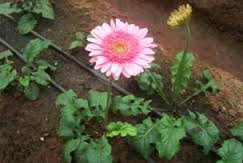About Gerbera Flower
Gerbera is a genus of plants in the Asteraceae. It
was named in honour of German botanist.
Gerbera is native to tropical regions of South
America, Africa and Asia. The first scientific description of a Gerbera was
made by J.D. Hooker in Curtis's Botanical Magazine in 1889 when he described
Gerbera jamesonii, a South African species also known as Transvaal daisy or
Barberton Daisy. Gerbera is also commonly known as the African Daisy.
Gerbera species bear a large capitulum with
striking, two-lipped ray florets in yellow, orange, white, pink or red colours.
The capitulum, which has the appearance of a single flower, is actually
composed of hundreds of individual flowers. The morphology of the flowers
varies depending on their position in the capitulum. The flower heads can be as
small as 7 cm diameter or up to 12 cm .
Gerbera is very popular and widely used as a
decorative garden plant or as cut flowers. The domesticated cultivars are
mostly a result of a cross between Gerbera jamesonii and another South African
species Gerbera viridifolia. The cross is known as Gerbera hybrida. Thousands
of cultivars exist. They vary greatly in shape and size. Colours include white,
yellow, orange, red, and pink. The centre of the flower is sometimes black.
Gerbera is also important commercially. It is the
fifth most used cut flower in the world
It is also used as a model organism in studying flower formation.


















































